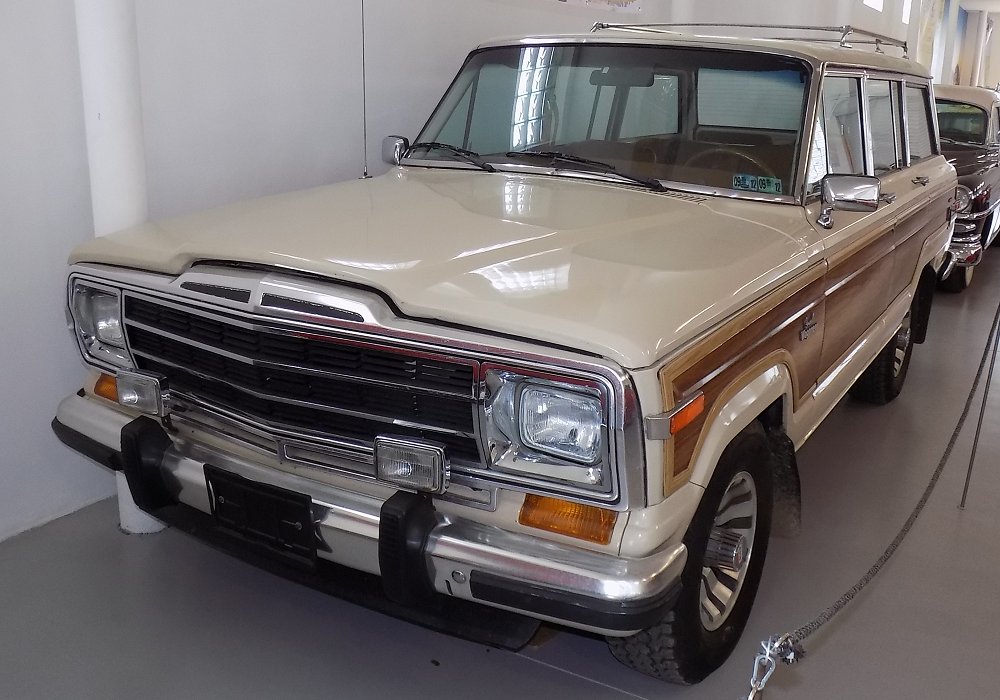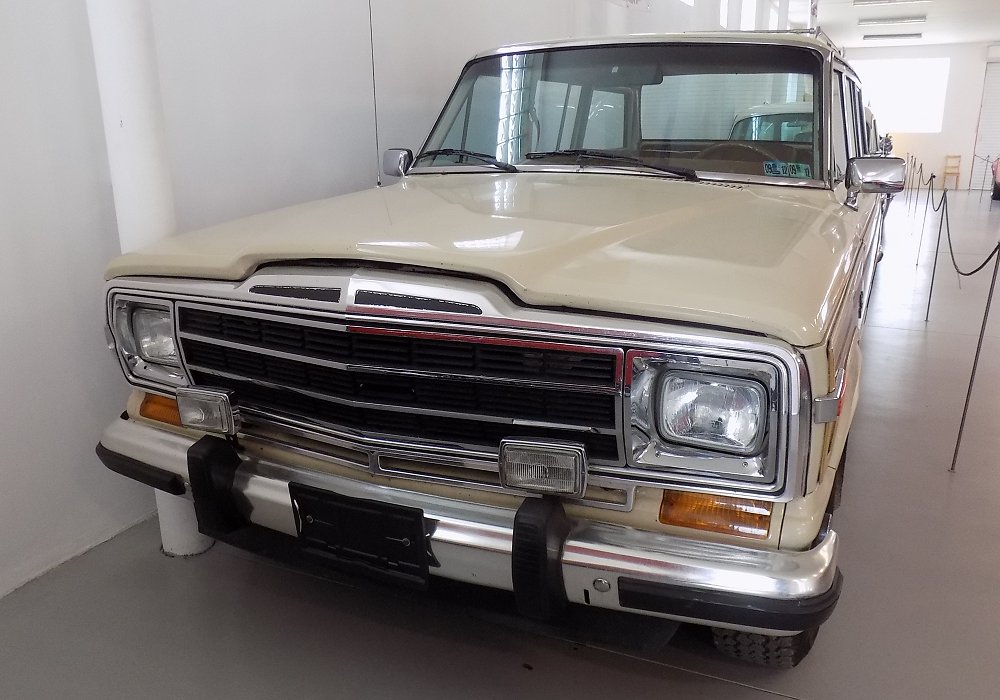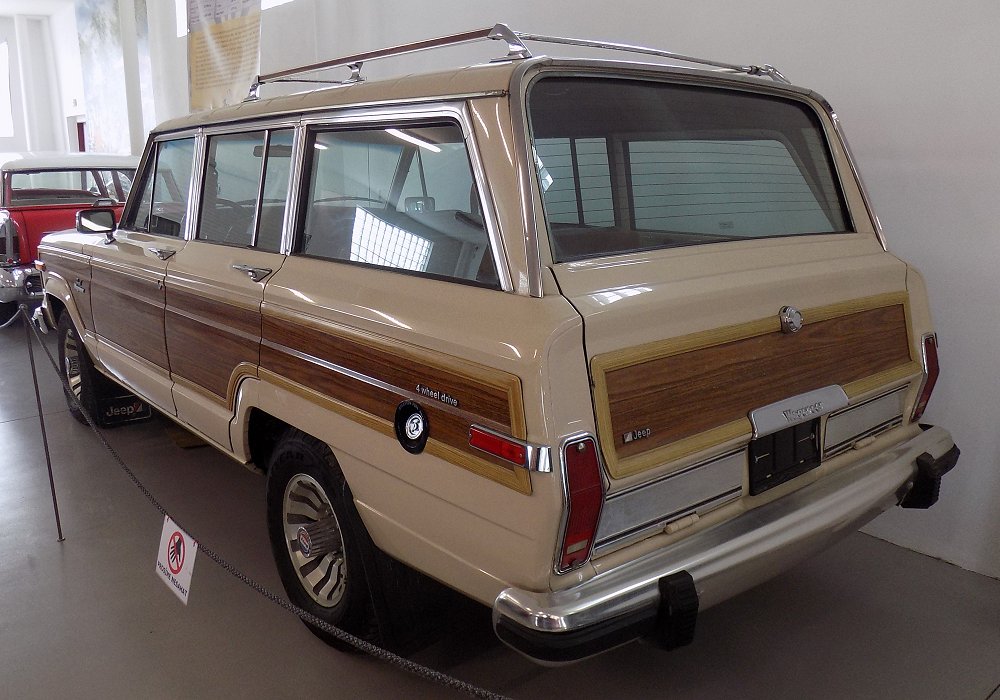Description
The Jeep Grand Wagoneer was the ultimate evolution of one of America’s most enduring and beloved vehicles, a model that took Jeep’s reputation for ruggedness and wrapped it in unmistakable luxury. Introduced in 1984 and built through 1991, the Grand Wagoneer carried forward a design that traced its roots to 1963, yet it remained relevant and desirable thanks to its timeless styling, powerful V8 engine, and unmatched blend of comfort and capability. It was the original luxury SUV, a vehicle that predated and outlasted many of its imitators, setting a standard for refinement in a four-wheel-drive that few could equal.
By the time the Grand Wagoneer name appeared, Jeep had already been refining the Wagoneer formula for more than two decades. The model had started life as a utilitarian family 4×4, but through careful evolution, it had become something unique—a hand-finished, high-end vehicle that offered both power and prestige. When American Motors Corporation (AMC) introduced the Grand Wagoneer as the flagship of the Jeep range, it represented the pinnacle of craftsmanship and tradition in an age when most vehicles were moving toward mass production and modern design.
Under the hood of the Grand Wagoneer was the AMC 360 cubic inch (5.9-litre) V8, producing around 144 to 175 horsepower depending on the year. It was a torque-rich engine rather than a high-revving one, delivering its strength smoothly and effortlessly at low speeds, which made it ideal for towing, climbing, or relaxed highway driving. The engine was paired with Chrysler’s rugged three-speed TorqueFlite automatic transmission, known for its smooth shifting and reliability. Power was routed through Jeep’s Selec-Trac four-wheel-drive system, which allowed the driver to choose between rear-wheel drive, full-time four-wheel drive, or low-range four-wheel drive for demanding off-road conditions. The combination gave the Grand Wagoneer remarkable versatility—it was as comfortable pulling a boat down the interstate as it was climbing through snow or mud.
Mechanically, the Grand Wagoneer retained the classic Jeep layout of a body-on-frame design, solid axles, and leaf springs at both ends. While this construction was traditional, it gave the vehicle immense strength and durability. The ride was firm but composed, with enough suspension travel to soak up rough terrain while maintaining stability on pavement. Power-assisted steering and front disc brakes came standard, and though it wasn’t agile by modern standards, the Grand Wagoneer’s steady, confident feel made it an excellent long-distance cruiser.
Visually, the Grand Wagoneer became an icon of understated American luxury. Its upright body, large windows, and commanding stance gave it presence, while the signature woodgrain vinyl panels along the sides and tailgate became its defining feature. The chrome bumpers, polished aluminum trim, and classic seven-slot Jeep grille added to its stately character. The long hood and tailgate proportions gave it a timeless elegance that stood apart from other vehicles of the era. It looked at once sophisticated and rugged, equally at home parked in front of a ski lodge or rolling down a country road.
Inside, the Grand Wagoneer offered one of the most luxurious cabins of its time. Every detail reflected a focus on comfort and craftsmanship. The seats were upholstered in rich leather with corduroy or cloth inserts, generously padded and designed for long journeys. Deep-pile carpeting covered the floors, while the dashboard featured simulated wood trim and soft-touch materials. Power windows, power door locks, cruise control, air conditioning, and a premium AM/FM stereo system with cassette player all came standard—equipment that rivalled luxury sedans of the period. Optional features included power seats, a rear defroster, and even a roof rack, allowing the Grand Wagoneer to combine convenience with practicality.
What made the Grand Wagoneer so special was not just its comfort but the fact that it retained the heart of a true Jeep. It could go places few luxury vehicles dared. The combination of V8 power, Selec-Trac four-wheel drive, and solid construction meant it could climb, wade, or haul without complaint. Owners could drive it from city streets straight onto unpaved trails with confidence, and many did. It became a favorite among affluent outdoor enthusiasts, ranchers, and professionals who wanted a vehicle that could handle the elements without sacrificing refinement.
Driving a Grand Wagoneer was a unique experience. The steering was light, the engine smooth, and the cabin quiet at speed. The V8’s low-end torque gave it a reassuring sense of power, whether pulling away from a stoplight or towing a heavy load. Despite its size and age, it handled with composure, its long-travel suspension absorbing bumps with ease. The upright driving position and expansive windows provided excellent visibility, making it easy to place on narrow roads or tight trails.
By the time production ended in 1991, the Grand Wagoneer had become a symbol of classic American design. It was built largely by hand in Jeep’s Toledo, Ohio, plant, with craftsmanship that stood in contrast to the increasingly automated production lines of the time. Each one carried an air of individuality and authenticity that appealed to buyers who valued quality over novelty. Even as newer SUVs appeared, none captured the same sense of tradition and presence.
Today, the Jeep Grand Wagoneer is revered as a collectible classic and a cornerstone of the luxury SUV segment. Well-preserved examples command high prices, and specialist restorers now rebuild them to concours standards for a new generation of enthusiasts. Its combination of chrome trim, leather upholstery, woodgrain finish, and that distinctive V8 rumble evokes an era when vehicles were built with personality and purpose.
The Grand Wagoneer’s legacy endures not just in name but in philosophy. It proved that a vehicle could be both sophisticated and adventurous, elegant yet capable. It laid the groundwork for the SUVs that dominate modern roads, yet none have quite matched its charm or authenticity. In its blend of comfort, craftsmanship, and unshakable ability, the Jeep Grand Wagoneer remains a true American original—a timeless expression of what it means to travel in style, strength, and freedom.



